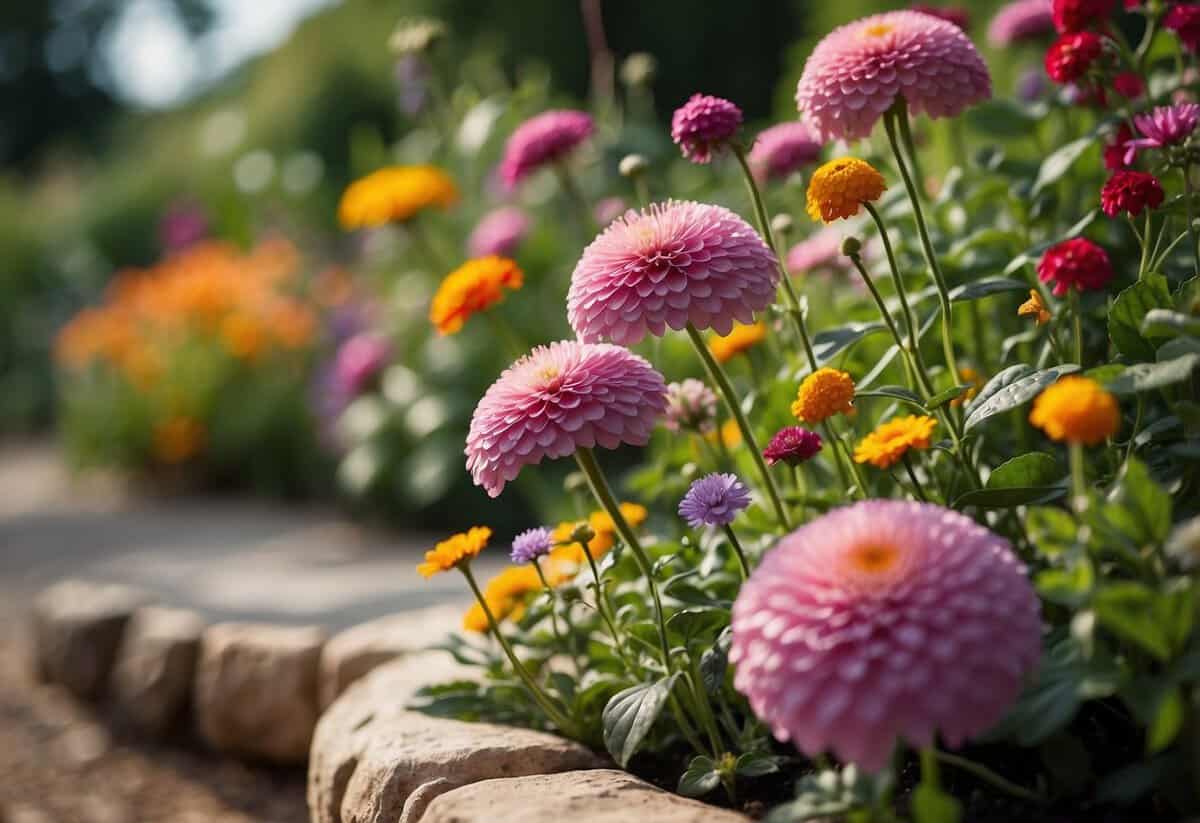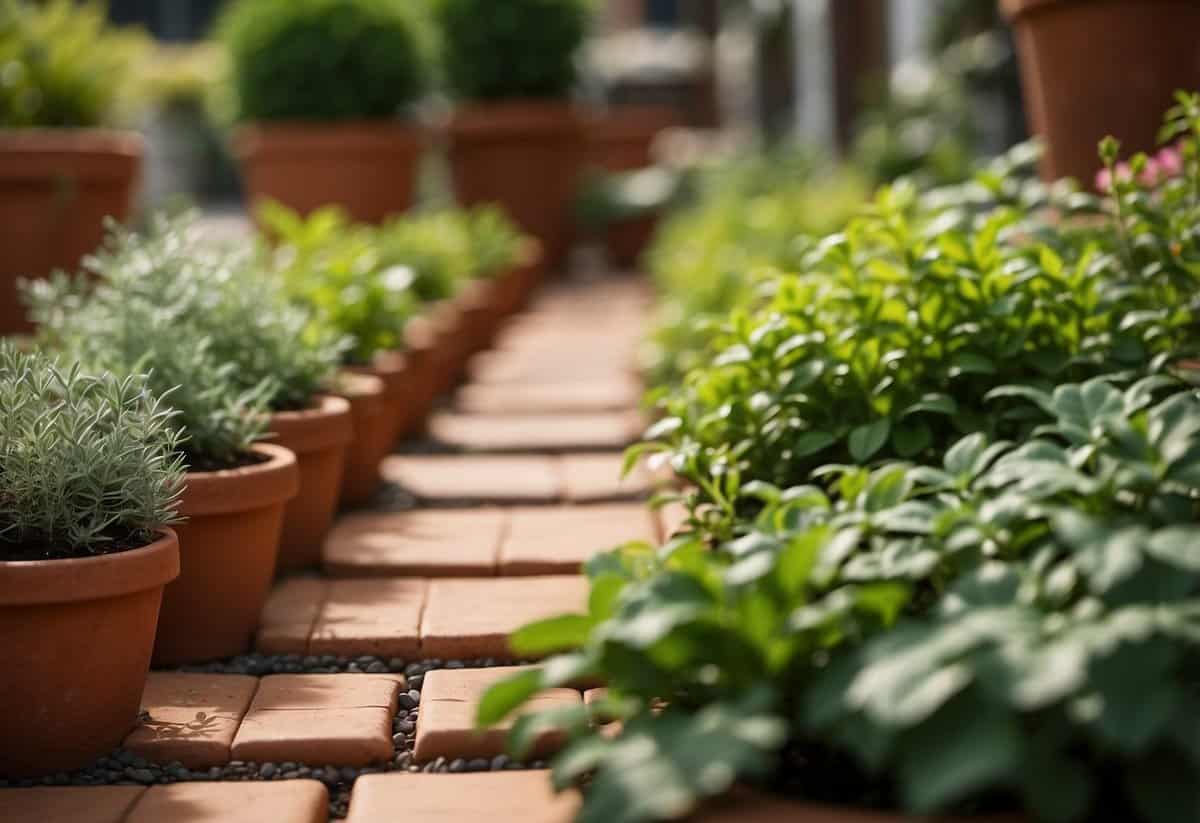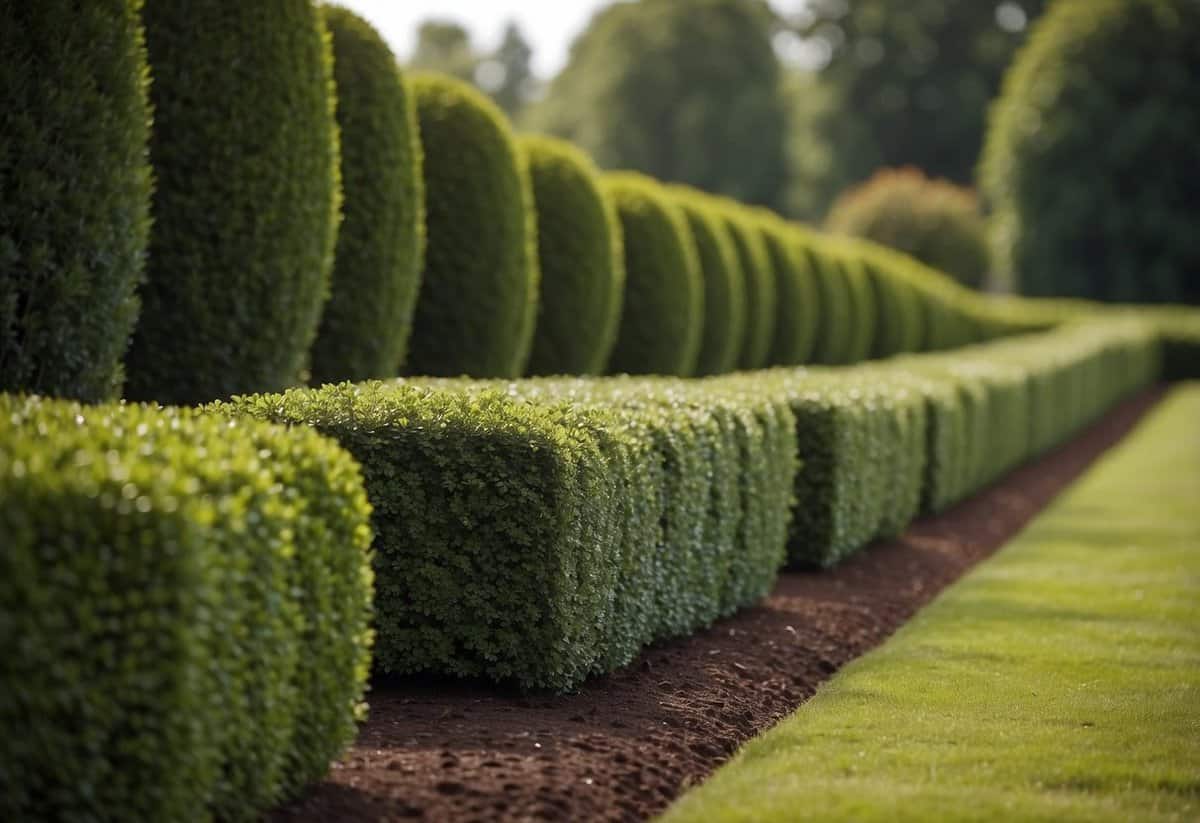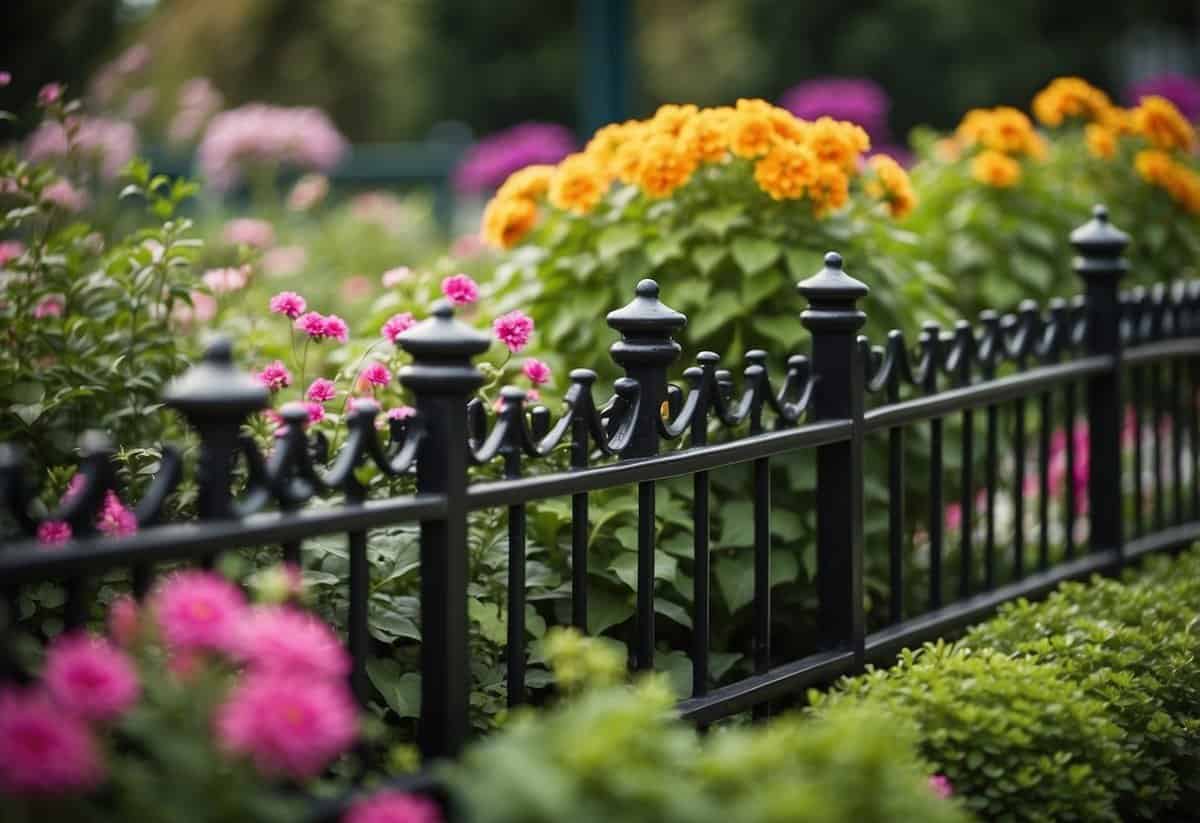Small Garden Border Ideas: Creative Ways to Enhance Your Outdoor Space
Creating a beautiful garden doesn’t require a large space. With the right garden border ideas, you can transform even the smallest areas into charming, well-defined spaces. The key is to choose the right materials and plants that fit your garden’s size and your personal style.

Small garden borders can serve many purposes, from adding structure to your garden to highlighting special plants or features. They help in keeping order and can add a sense of completeness to your garden design. Whether you want a neat and tidy look or something more playful and natural, there’s a small garden border idea out there for you.
1) Cobblestone Edging

Cobblestone edging adds a classic touch to any garden with its timeless look. The stones’ natural texture and rounded shapes blend nicely with plants and flowers, creating a charming boundary.
You can easily lay cobblestones along your garden beds. This type of edging helps prevent soil erosion and keeps mulch in place. It’s also durable, lasting for years with minimal maintenance.
Using cobblestone edging gives your garden a neat and organized appearance. Plus, it works with various garden styles, from rustic to modern.
2) Recycled Glass Borders

Using recycled glass bottles for garden borders adds a splash of color to your outdoor space. Simply bury the bottles neck down, leaving the colorful bottoms above the soil.
You can mix and match different colored bottles or keep it uniform. This idea is both creative and environmentally friendly, making your garden unique and eco-conscious. Check out more ideas at Garden Edging Ideas.
3) Terracotta Tiles

Terracotta tiles are a charming option for small garden borders. They bring a warm, earthy feel to your garden space. These tiles are often sold individually or in pallets, making it easy to customize your border length.
To install terracotta edging, you just need to loosen the soil, cover the tile with a wooden block, and gently tap it in using a mallet. This simple installation process means you don’t need expert skills to get a beautiful result. Terracotta edging can add a fun and interesting look to your garden, enhancing its overall appeal. Check out some ideas and tips for terracotta garden edging here and here.
4) Bamboo Borders

Bamboo adds a relaxing feel to any garden. It’s a versatile plant that grows fast and is easy to maintain. The stems are smooth and reddish-brown with small green flowers.
Using bamboo for garden borders can also be a teaching tool for children. They can learn about plant life and even enjoy bamboo shoots, which are edible and taste like peas.
Bamboo can live for up to 50 years. For a lush look, mix in different kinds of moss or ferns. You can drive each section of bamboo into the ground using a rubber mallet or by hand if they are thin.
5) Lavender Hedge

A lavender hedge can add a touch of beauty and fragrance to your garden. It’s perfect for defining borders and pathways.
Lavender is not only attractive but also easy to maintain. It thrives in well-drained soil and sunny spots.
To start, plant young lavender plants spaced about 12-15 inches apart. Water them regularly and ensure good air circulation. The result will be a lush, aromatic hedge that brings charm to any garden. For more details, consider this guide on lavender hedges.
6) Low Boxwood Hedge

A low boxwood hedge can add a tidy and classic touch to your garden. These evergreens are perfect for creating structured borders.
Their dense foliage provides a year-round green border that is easy to shape. They thrive in various settings, including partial shade and full sun.
These hedges are also low maintenance, requiring only occasional pruning to keep their neat appearance. You can find more ideas for a low boxwood hedge to enhance your garden’s look.
7) Brick Pavers

Brick pavers are a great way to give your garden a classic and polished look. They are easy to install and can last for years.
To start, dig a trench where you want to place the pavers. Make sure it is deep enough to fit the bricks.
Next, add a thin layer of paver base. This helps to keep the bricks stable. Lay the bricks one at a time, tapping each one in place with a rubber mallet.
For proper drainage, slope each brick slightly away from the garden bed. Use a small level to check that each brick is even.
For more tips and details, you can check out this guide on laying brick garden edging.
8) River Rock Edge

Using river rock for your garden border is both practical and attractive. It creates a natural look that complements your plants perfectly.
To set up, start by laying smooth rocks around the edge of your garden. Ensure the rocks fit snugly together to avoid gaps.
Using a rubber mallet can help tap the rocks into place securely. River rocks work well with different garden layouts. They blend nicely with other natural elements and require little maintenance.
9) Wrought Iron Fencing

Wrought iron fencing adds a touch of elegance to your garden. Its sturdy structure helps create a secure boundary without feeling too enclosed.
This type of fencing works well in smaller gardens. It doesn’t block light and can be quite decorative with different styles and designs.
For more ideas on wrought iron fencing, you can check out these design principles.
10) Garden Log Roll

Garden log rolls offer a rustic, charming look for your garden. They’re easy to install and create a natural border for flower beds or paths.
To set up, dig a shallow trench and place the logs in. Fill gaps with soil or sand to keep the logs stable.
For better drainage, you can add coarse sand underneath the logs. This prevents them from sitting in water and helps avoid rot. Follow these tips for a neat and functional garden edge.
Design Principles for Small Garden Borders

Creating a small garden border involves balancing scale and choosing the right materials. Attention to these elements can make your garden look well-organized and inviting.
Balancing Scale and Proportion
When designing a small garden border, it’s essential to maintain the right scale and proportion. Small spaces can easily look cluttered if plants are too large or too many are used. Opt for compact or dwarf plant varieties. For instance, use dwarf irises or miniature roses which provide color without overwhelming the space.
Layering is another technique. Place taller plants at the back and shorter ones in front to create depth and interest. This way, you ensure each plant is visible and light is maximized, which is crucial in a small garden.
Add elements like ornamental grasses or small shrubs to give structure. These elements can create a sense of enclosure without feeling cramped. By carefully choosing and placing plants, your small garden border will look balanced and proportional.
Choosing the Right Materials
The materials you use for a small garden border play a significant role in its visual appeal and maintenance. For instance, using gravel and stones can add texture and are low-maintenance. Gravel also allows for better drainage, which can be beneficial for various plants.
Edging materials like bricks or wooden borders can keep your garden looking neat. Bricks offer a classic look and can be arranged in patterns, while wooden borders provide a rustic feel. Choose materials that complement your garden’s style and won’t dominate the space.
Even simple elements like mulch can improve the appearance and health of your borders. Mulch helps retain moisture and suppress weeds. With careful selection of materials, you can enhance both the functionality and beauty of your small garden border.
Creative Border Ideas for Small Gardens

Creating a beautiful border in a small garden can set the tone for your outdoor space. Using upcycled materials, incorporating edible plants, and combining different textures are great ways to make your garden pop.
Using Upcycled Materials
Upcycled materials can add a unique touch to your garden borders. Old bricks, broken pottery, and even glass bottles can be great options.
For instance, you can create a whimsical border by placing colorful glass bottles upside down along the edge of your garden bed. Another idea is to use old wooden pallets cut into planks and arrange them as a rustic picket fence. Using items you already have saves money and gives your garden an eco-friendly twist!
Incorporating Edibles
Edible plants not only beautify your garden but also provide fresh ingredients for your kitchen. You can line your garden borders with herbs like basil, thyme, or rosemary.
Strawberries make an excellent choice for a border plant, as they are low-growing and produce tasty fruit. For a touch of color, you can add rainbow chard, with its vibrant stems and leaves. Incorporating edibles creates a practical and visually appealing garden border.
Combining Different Textures
Mixing various textures adds depth and interest to your garden. Use a combination of plants with different leaf shapes, colors, and heights.
For example, you can pair the soft, feathery leaves of ferns with the broad, glossy leaves of hostas. Ornamental grasses can add movement and contrast when placed next to flowering plants. By thoughtfully combining textures, you create visual intrigue and a more dynamic garden border.
Maintaining Your Garden Borders

Keeping your garden borders looking great takes a little effort. Focus on seasonal care and managing pests and weeds to ensure your borders stay healthy and attractive.
Seasonal Care Tips
Each season brings its own set of tasks for maintaining garden borders. In spring, remove any fallen leaves and debris from the borders. This helps prevent rot and diseases. Prune plants as needed to encourage healthy growth and shape them properly.
During summer, watering is crucial. Make sure your borders receive enough water, especially during dry spells. Mulching helps retain moisture and regulate soil temperature.
In fall, clear away dead plants and fallen leaves. This reduces the chance of pests overwintering in your garden. It’s also a good time to plant new perennials and shrubs.
Winter usually requires less work but don’t forget to check for any damages caused by frost. Protect vulnerable plants with mulch or coverings and make sure the soil is not waterlogged.
Pest and Weed Control
Pest and weed control are essential for a healthy garden border. Start by inspecting your borders regularly for signs of pests like aphids, slugs, and snails. Hand-picking and using organic repellents can help manage these pests.
Weeds can quickly overrun your borders if left unchecked. To control them, pull them out by hand or use a hoe. Applying mulch can also help prevent weed growth by blocking sunlight.
Native plants and decorative stones can deter pests naturally. Planting pest-resistant flowers and shrubs also helps in keeping your garden border lush and beautiful without invasive treatments. Always avoid harsh chemicals that can damage the ecosystem.







